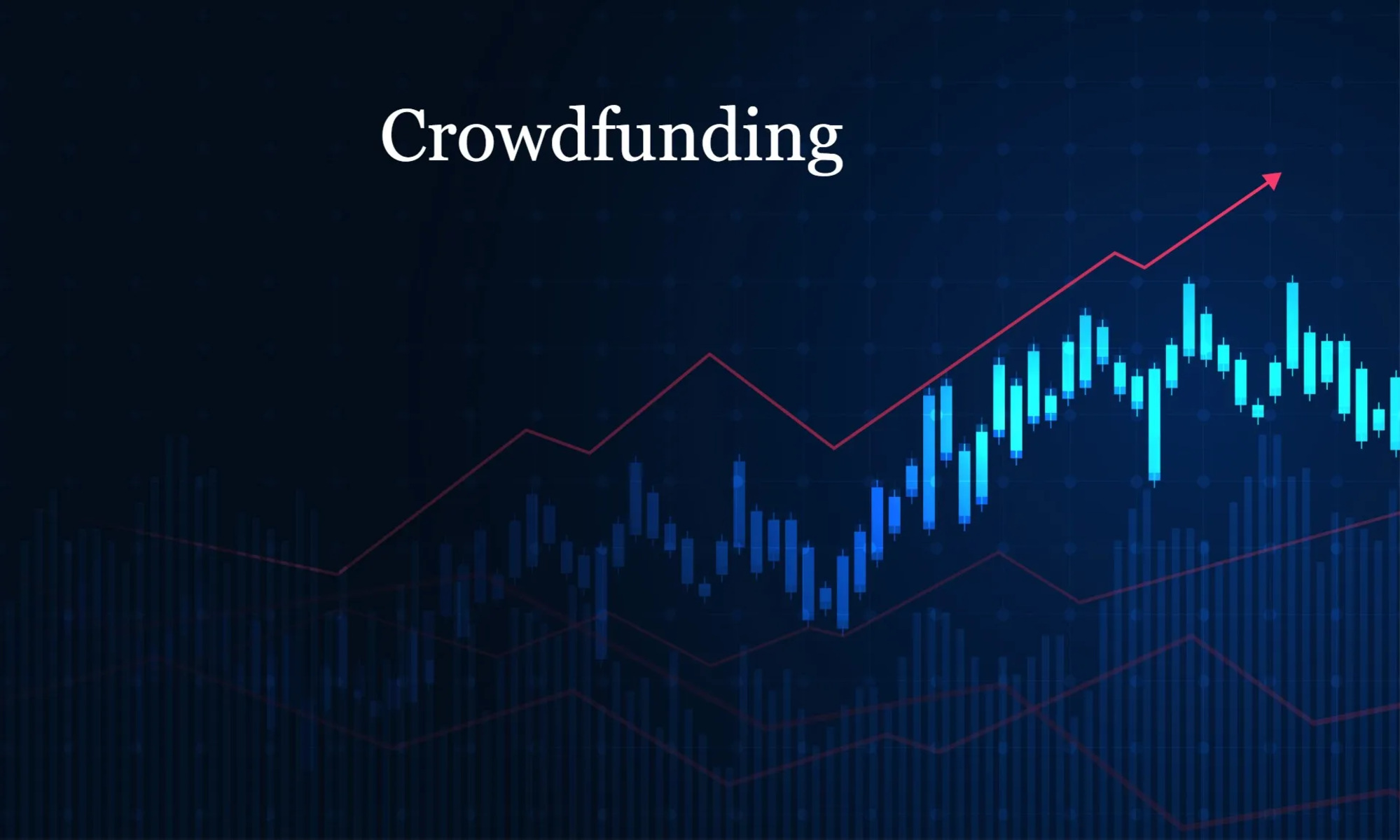Introduction
Welcome to the world of crowdfunding! In today’s digital age, innovative ideas and projects have the power to thrive with the support of a global community. Whether you’re a startup entrepreneur or an established business looking to fund a new venture, crowdfunding provides a democratic and accessible platform to find investors who believe in your vision.
But with so many crowdfunding platforms and strategies to choose from, it can be overwhelming to navigate this landscape effectively. That’s why we’ve put together this comprehensive guide to help you find investors through crowdfunding. By following these steps and implementing proven tactics, you’ll increase your chances of attracting the right investors and reaching your funding goals.
Before we dive into the details, let’s first understand what crowdfunding is all about. Simply put, crowdfunding is a modern way of raising capital by soliciting small amounts of money from a large number of individuals, typically via an online platform. It allows entrepreneurs to bypass traditional funding routes, such as bank loans or venture capital investors, and connect directly with potential backers.
Thanks to the power of the internet, crowdfunding has disrupted the traditional investment landscape, democratizing the process and giving everyone an equal opportunity to participate. This inclusive form of financing enables individuals from all walks of life to support projects they believe in, regardless of geographical location, social status, or financial resources.
By harnessing the collective power and reach of crowdfunding platforms, entrepreneurs can tap into a vast global network of potential investors, who are eager to support innovative ideas and passionate about making a difference. The success stories of companies like Oculus Rift and Pebble demonstrate the immense potential of crowdfunding campaigns to attract not only funding but also public attention and validation.
In the following sections, we’ll explore ten essential steps to finding investors through crowdfunding. From defining your investment needs and crafting a compelling campaign to leveraging social media and attending industry events, we’ll delve into the strategies that can help you unlock the full potential of crowdfunding. So, let’s get started!
Understanding Crowdfunding
Crowdfunding is a powerful tool that has revolutionized the way entrepreneurs and businesses raise funds for their projects. It’s important to have a clear understanding of how crowdfunding works before embarking on your investor search. This section will provide you with the necessary knowledge to navigate the crowdfunding landscape.
At its core, crowdfunding is a model of fundraising where individuals contribute small amounts of money to support a specific project or venture. These contributions can come from family, friends, acquaintances, or even strangers who are drawn to the project’s mission, vision, or potential rewards.
There are three main types of crowdfunding: donation-based, reward-based, and equity-based crowdfunding.
1. Donation-based crowdfunding: This type of crowdfunding is primarily used for charitable causes or social initiatives. Contributors donate money without expecting any financial return. Instead, they are motivated by the desire to support a cause or help someone in need.
2. Reward-based crowdfunding: In reward-based crowdfunding, supporters contribute money in exchange for a non-financial reward. These rewards can range from early access to the product or service being developed to exclusive merchandise or experiences related to the project. This model is popular among artists, inventors, and entrepreneurs looking for pre-sales or early adopters of their products.
3. Equity-based crowdfunding: Equity-based crowdfunding involves offering shares or ownership stakes in the company to investors in exchange for their financial contribution. Investors believe in the potential success of the project and expect a return on their investment in the form of dividends or capital appreciation.
Now that you have a basic understanding of the different types of crowdfunding, it’s important to note that each type has its own rules, regulations, and platforms. Research the specific requirements and regulations for the type of crowdfunding you intend to pursue, as this will guide your approach and ensure compliance with legal and financial obligations.
Furthermore, crowdfunding platforms play a crucial role in connecting project creators with potential investors. Platforms like Kickstarter, Indiegogo, and GoFundMe provide a digital space where creators can showcase their projects, set funding goals, and communicate with supporters. Each platform has its own unique features and target audience, so it’s important to research and select the platform that aligns with your project’s goals and target market.
Understanding the nuances of crowdfunding and the various platforms available will enable you to make informed decisions throughout your journey. Armed with this knowledge, you’re now ready to move on to the next step: defining your investment needs.
Step 1: Define Your Investment Needs
Before embarking on a crowdfunding campaign, it’s crucial to define your investment needs clearly. This step involves assessing the financial requirements of your project and determining how much funding you need to achieve your goals. Let’s dive into the details of how to define your investment needs effectively.
The first question you need to answer is: What is the purpose of your crowdfunding campaign? Are you looking to launch a new product, scale your existing business, fund a creative project, or support a social cause? Clearly outlining the purpose of your campaign will not only help you set realistic funding goals but also attract the right investors who resonate with your vision.
Next, conduct a thorough analysis of your project’s financial requirements. Take into account the costs associated with development, manufacturing, marketing, distribution, and any other expenses that are essential for bringing your project to fruition. Make sure to include a buffer for unexpected expenses and contingencies.
Once you have a clear understanding of your financial needs, you can determine the specific funding goal for your crowdfunding campaign. It’s essential to set a realistic and attainable target that aligns with the scope and scale of your project. Setting an excessively high funding goal may discourage potential investors, while setting a too low goal may raise questions about the feasibility and credibility of your project.
Moreover, consider the timeline for your campaign. How long do you want your crowdfunding campaign to run? Determine the duration based on the time needed to reach your funding goal and generate sufficient momentum. A shorter campaign can create a sense of urgency and increase investor engagement, while a longer campaign allows for a gradual buildup of support.
Lastly, think about the potential rewards you can offer to your investors. Rewards provide an incentive for people to contribute to your campaign and can range from exclusive access to the product, personalized experiences, or special perks related to your project. Ensure that the rewards are compelling and align with the investment level to entice investors to support your campaign.
By defining your investment needs clearly, you set the foundation for a successful crowdfunding campaign. Taking the time to assess your financial requirements, establish realistic funding goals, determine the campaign’s timeline, and craft enticing rewards will position you for success in attracting the right investors.
Step 2: Research Crowdfunding Platforms
Researching crowdfunding platforms is a crucial step in finding investors for your campaign. Different platforms cater to different types of projects and audiences, so it’s essential to choose the right platform that aligns with your goals. Let’s explore how to effectively research crowdfunding platforms to maximize your chances of success.
Start by identifying the main crowdfunding platforms available. Some popular platforms include Kickstarter, Indiegogo, GoFundMe, and SeedInvest. Each platform has its own unique features, target audience, and focus areas.
Take the time to study the platform’s guidelines, rules, and terms of service. Understand the platform’s eligibility criteria and determine whether your project fits within their guidelines. Some platforms have specific categories, such as technology, arts, or social causes, while others are more open to a variety of projects. Make sure your project aligns with the platform’s niche to increase your chances of attracting the right investors.
Research the success stories and case studies of projects similar to yours that have used the platform. Look for projects that have achieved their funding goals and analyze the strategies they used to engage their audience and attract investors. This will give you valuable insights into what works and what doesn’t on that specific platform.
Consider the platform’s user interface and design. A well-designed and user-friendly platform can enhance the visibility and appeal of your campaign. Look for platforms that provide customizable campaign pages and support multimedia elements such as photos, videos, and infographics. These visual elements can effectively communicate your project’s story and capture the attention of potential investors.
Furthermore, research the platform’s community and user engagement features. Some platforms offer features like backer updates, comments sections, and social sharing options, which can help you engage with your audience and build a community around your project. Community engagement is vital for crowdfunding success as it fosters trust, builds credibility, and encourages backers to share your campaign with their networks.
Lastly, consider the platform’s reach and marketing capabilities. Look for platforms with a large and active user base, as this will increase the visibility of your campaign to a wider audience. Some platforms also offer additional marketing support and promotional opportunities, such as featuring your project in their newsletters or social media channels. These promotional efforts can significantly boost your campaign’s exposure and attract potential investors.
By thoroughly researching crowdfunding platforms, you can identify the platform that best aligns with your project’s goals, target audience, and requirements. Choosing the right platform will enhance your campaign’s visibility, engagement, and ultimately help you find the investors who believe in your project’s potential.
Step 3: Create a Compelling Campaign
Creating a compelling campaign is essential to attract investors and stand out from the sea of crowdfunding projects. Your campaign should effectively communicate your project’s value proposition, engage potential investors emotionally, and motivate them to contribute. Let’s explore how to create a compelling campaign that captures attention and encourages investment.
The first element of a compelling campaign is a captivating project description. Clearly articulate your project’s vision, mission, and goals in a concise and engaging manner. Describe the problem your project solves or the innovative solution it offers. Use storytelling techniques to evoke emotions and connect with your audience on a deeper level.
Support your project description with visually appealing and informative media. Include high-quality images, videos, and infographics that showcase your product, prototypes, or previous work. Visual content not only helps potential investors better understand your project but also adds credibility and professionalism to your campaign.
Set clear and realistic funding goals and explain how the funds will be utilized. Break down the financial allocation in a transparent manner, highlighting the critical areas that require support. This helps build trust with potential investors and assures them that their contributions will be used wisely.
Develop compelling rewards for your backers. Offer a range of rewards at different investment levels to cater to various budgets and interests. Make sure the rewards are unique, valuable, and closely tied to your project. Consider offering limited-edition rewards or early access to your product to create a sense of exclusivity and urgency.
Create a timeline for your campaign and establish a sense of urgency. Clearly communicate the start and end dates of your campaign and emphasize the importance of early contributions. Consider implementing limited-time offers or early bird rewards to incentivize investors to make a commitment sooner rather than later.
Keep backers informed and engaged throughout your campaign. Regularly update them on the progress of your project, milestones achieved, and any significant developments. Encourage backers to provide feedback and participate in discussions related to your project. By fostering a sense of community and involving backers, you can build a loyal and supportive network around your campaign.
Emphasize social proof and credibility by showcasing testimonials, endorsements, or positive media coverage. Highlight any achievements or recognition your project has received. This helps build trust and confidence in potential investors, increasing the likelihood of them contributing to your campaign.
Lastly, craft a compelling call-to-action that clearly communicates what you want potential investors to do. Use persuasive language and create a sense of excitement and urgency. Make it easy for people to contribute by providing clear instructions on how they can support your campaign.
By creating a compelling campaign, you’ll increase your chances of attracting investors who resonate with your project and are motivated to contribute. Put in the effort to craft a visually appealing, emotionally engaging, and transparent campaign that inspires confidence and compels action.
Step 4: Reach Out to Your Network
When it comes to finding investors through crowdfunding, your existing network can be an invaluable resource. Leveraging personal connections and reaching out to your network can greatly increase your chances of securing funding for your project. Let’s explore how to effectively reach out to your network for support.
Start by making a list of all the individuals in your network who could potentially be interested in supporting your project. This can include family, friends, colleagues, mentors, business partners, or anyone who you think might have a genuine interest in your project. Take the time to identify their specific areas of expertise or interests, as this will help you tailor your approach and messaging.
Craft personalized messages that explain your project, its goals, and the impact it can have. Avoid generic mass messages and focus on building genuine connections. Let your passion and excitement for the project shine through, as this can be contagious and inspire others to support your cause. Be clear about how people can contribute and what you’re asking them to do.
Consider utilizing different communication channels to reach out to your network. Use email, social media, personal meetings, or phone calls, depending on the relationship and preferences of the individuals you’re contacting. Face-to-face meetings or phone calls can be particularly effective for building personal connections and conveying your enthusiasm.
Offer incentives for individuals to support your campaign. Explain the rewards they can receive by backing your project and emphasize the impact their contribution can make. Tailor the incentives based on each person’s interests or professional needs. For example, if a contact is in the media industry, offer them exposure opportunities or exclusive interviews related to your project.
Encourage your network to spread the word about your campaign. Ask them to share your project with their own networks and social media followers. Provide them with pre-written social media posts, emails, or other promotional materials that they can easily share. This expands the reach of your campaign and can attract potential investors who may not be directly connected to you.
Maintain regular communication with your network throughout your campaign. Keep them updated on the progress you’re making, milestones you’ve achieved, and any new developments. Express your gratitude for their support and let them know how their contributions are making a difference. This helps build a sense of community and encourages ongoing engagement.
Additionally, consider hosting an offline event or virtual gathering to bring your network together and share more about your project. This can be an opportunity to showcase your work, answer questions, and generate excitement. Encourage attendees to invite others who might be interested, further expanding your network of potential investors.
Remember, your network is a powerful asset in your crowdfunding journey. Don’t be afraid to reach out and ask for their support. Utilize personal connections, tailor your approach, and maintain ongoing communication. By leveraging your network effectively, you can create a strong foundation of support for your campaign.
Step 5: Engage with Potential Investors
Engaging with potential investors is a crucial step in the crowdfunding process. By actively connecting and building relationships with individuals who show interest in your project, you increase the likelihood of converting them into backers. Let’s explore how to effectively engage with potential investors and get them excited about supporting your campaign.
Start by monitoring your campaign’s comments section, social media channels, and email inbox for inquiries or expressions of interest. Promptly respond to any questions, comments, or messages you receive. Show genuine appreciation for their interest and take the time to provide thoughtful and informative responses.
Customize your messages and responses based on individual interests and inquiries. Tailoring your communication shows that you value their time and specific needs. This personalized approach helps to build rapport and establishes a foundation of trust between you and the potential investor.
Take the opportunity to go beyond simply answering questions. Engage in meaningful conversations and establish a connection with the potential investor. Show interest in their perspectives, experiences, and motivations. Actively listen to their feedback, concerns, and suggestions. This demonstrates that you value their input and are committed to creating a positive experience.
Share updates and progress on your campaign regularly. Keep potential investors informed about milestones achieved, significant developments, or new rewards. This not only nurtures their interest but also showcases the momentum and progress of your project. Transparency and regular updates build trust and make potential investors feel included in your journey.
Consider offering exclusive access or early bird perks to potential investors who have expressed interest. Providing them with a sense of exclusivity and special treatment can incentivize them to become backers. This can include behind-the-scenes content, private demos, or early access to product beta testing. Exclusivity creates a sense of privilege, increasing the perceived value of being part of your campaign.
Actively seek feedback and suggestions from potential investors. Show them that you value their input and are open to incorporating their ideas. This collaborative approach not only fosters engagement but also makes potential investors feel valued and invested in your project’s success. Implementing their suggestions can also increase the likelihood of their conversion into backers.
Host live Q&A sessions or webinars to interact with potential investors directly. These sessions provide a platform for open discussions, clarification of doubts, and deeper insights into your project. Involve your team members or industry experts to share their expertise and further enrich the conversation. Live interactions create a sense of authenticity and build trust among potential investors.
Lastly, thank potential investors for their interest and support, even if they haven’t yet become backers. Demonstrating gratitude strengthens the relationship and leaves a positive impression. This can encourage them to continue following your campaign and potentially convert into backers in the future.
By actively engaging with potential investors, you build relationships, demonstrate your commitment, and create a community around your campaign. Consistent communication, personalized interactions, and a willingness to listen and incorporate feedback can significantly increase your chances of converting potential investors into devoted backers.
Step 6: Leverage Social Media and Online Communities
Social media and online communities play a vital role in finding investors through crowdfunding. These platforms provide a vast audience reach, engagement opportunities, and the ability to amplify your campaign’s message. Let’s explore how to effectively leverage social media and online communities to attract potential investors.
Start by selecting the right social media platforms for your campaign. Consider your target audience and the platforms they are most active on. Platforms like Facebook, Twitter, LinkedIn, and Instagram are commonly used for crowdfunding campaigns. Choose platforms that align with your project’s objectives and demographics.
Create engaging and visually appealing social media profiles that accurately represent your project. Use consistent branding elements and imagery to create a cohesive and professional appearance. Craft an attention-grabbing bio or description that clearly communicates what your project is about and the impact it can make.
Develop a content strategy that showcases your project’s progress, highlights the benefits, and generates excitement. Feature behind-the-scenes photos, videos, or infographics that provide a glimpse into the development process. Share updates, milestones, and success stories to keep your audience engaged and informed.
Utilize hashtags strategically to expand the reach of your content and connect with relevant communities. Research and identify popular hashtags within your industry or niche. Engage with those hashtags by posting relevant content, participating in conversations, or following and interacting with influential users.
Encourage your supporters and backers to share your campaign on their own social media platforms. Provide them with pre-written posts, images, or videos that they can easily share with their networks. User-generated content can significantly increase your campaign’s visibility and attract potential investors who may be more likely to trust recommendations from their peers.
Participate in online communities, forums, and groups that are relevant to your project. Engage in discussions, offer valuable insights related to your industry, and build relationships with community members. Avoid being overly promotional; instead, focus on providing helpful information and establishing your expertise.
Consider collaborating with influencers or micro-influencers who have a following in your industry or target audience. Influencers can help amplify your message and reach a broader audience. Seek collaborations where the influencer genuinely supports and believes in your project, ensuring a more authentic and impactful partnership.
Engage with your social media followers and online community members by responding to comments, messages, and inquiries in a timely and genuine manner. Show appreciation for their support, answer their questions, and address any concerns they may have. Building authentic connections fosters trust and increases the likelihood of garnering support.
Monitor and track your social media metrics to evaluate the effectiveness of your efforts. This includes measuring engagement, reach, click-through rates, and conversions. Analyze these metrics to identify which strategies or content types resonate most with your audience and adjust your approach accordingly.
By leveraging social media and online communities effectively, you can expand your campaign’s visibility, engage with potential investors, and foster a sense of community around your project. Be strategic in your content creation, proactive in engaging with your audience, and intentional in building relationships with influencers and online communities.
Step 7: Network at Events and Conferences
Attending events and conferences is a fantastic opportunity to network and connect with potential investors for your crowdfunding campaign. These gatherings provide a platform to showcase your project, engage in industry discussions, and build relationships with like-minded individuals. Let’s delve into how to effectively network at events and conferences to find investors.
Research and identify relevant events and conferences in your industry or niche. Look for those that attract entrepreneurs, investors, and professionals who align with your project’s goals and target market. Check event websites, social media channels, and industry publications to discover upcoming events that might interest you.
Prioritize events and conferences that specifically focus on crowdfunding or attract a high number of potential investors. These events will provide a more targeted audience and increase your chances of connecting with individuals who have an interest in supporting innovative projects.
Prepare an elevator pitch that clearly communicates your project’s value proposition, unique selling points, and funding goals. Practice delivering your pitch in a confident and concise manner. Make sure to engage potential investors by explaining how their support can make a tangible impact and the potential returns they can receive.
Bring professional-looking marketing materials, such as business cards or brochures, to share with potential investors. Include relevant information about your project, your contact details, and links to your crowdfunding campaign. These materials serve as a tangible reminder of your project and make it easy for potential investors to remember and follow up with you later.
Attend workshops, panel discussions, and presentations related to crowdfunding, entrepreneurship, or your specific industry. Participating in these sessions not only expands your knowledge but also presents opportunities to engage with experts, influencers, and other attendees who might have an interest in your project.
Take advantage of networking opportunities during breaks, meals, or networking sessions. Approach potential investors politely, introduce yourself and your project, and express your interest in connecting with them further. Be respectful of their time, listen attentively, and ask insightful questions. Show genuine interest in their work or experiences.
Exchange contact information with potential investors you meet. This can be through business cards, mobile apps designed for networking, or even a simple note-taking method. Make a note of the conversation you had or any specific points of interest to refer back to when you follow up with them after the event.
Follow up with potential investors after the event to keep the connection alive. Send personalized follow-up emails thanking them for the conversation and expressing your interest in continuing the discussion. Include any additional information they might find valuable or any updates on your campaign’s progress. Reinforce the key points of your project and the potential benefits for investors.
Maximize the opportunity to network by staying active on social media during the event. Share updates, insights, and photos from the event to engage with attendees and potential investors who may not have had the chance to meet you in person. Use event hashtags and tags to extend your reach and continue the conversation online.
By effectively networking at events and conferences, you can expand your connections, build relationships with potential investors, and generate interest in your crowdfunding campaign. Be prepared, engage actively, and follow up promptly to make the most of these opportunities.
Step 8: Collaborate with Influencers and Industry Experts
Collaborating with influencers and industry experts can significantly boost the visibility and credibility of your crowdfunding campaign. These individuals have a loyal following and expertise in your industry, making their endorsement and support valuable in attracting potential investors. Let’s explore how to effectively collaborate with influencers and industry experts to enhance your campaign.
Identify influencers and industry experts who align with your project’s goals, values, and target audience. Look for individuals who have a significant social media presence, engaged followers, and a track record of collaborating with projects similar to yours. Research their previous endorsement partnerships and ensure they have a genuine interest in your project.
Reach out to influencers and industry experts with a personalized message that explains your project, its value proposition, and why you believe their support would be valuable. Highlight any relevant achievements, milestones, or recognition your project has received to grab their attention and appeal to their interests.
Offer a mutually beneficial collaboration proposal. Clearly outline what you expect from the collaboration and the benefits the influencer or expert will receive in return. This could include exposure to your target audience, promotion on your crowdfunding campaign page, or even a share of the funds raised if you opt for an equity-based crowdfunding model.
Provide influencers with the necessary tools and information to effectively promote your project. This could include high-quality images, videos, infographics, or product samples that they can use to create engaging content. Make it easy for them to share your campaign by providing pre-written social media posts, captions, or emails that they can customize and personalize.
Engage in ongoing communication with influencers and experts throughout the collaboration. Keep them updated on your campaign’s progress, any milestones achieved, or significant developments. Show appreciation for their support and regularly thank them publicly for their contribution. This helps build a strong relationship and encourages them to continue supporting your campaign.
Consider hosting joint promotional events, webinars, or interviews featuring the influencer or expert. This not only adds credibility to your project but also provides an opportunity to engage with their audience and expand your reach. Collaborative events can generate excitement, attract attention, and create a sense of exclusivity around your campaign.
Encourage influencers and industry experts to actively engage with your campaign and interact with potential investors. This can be through responding to comments, answering questions, or even hosting live Q&A sessions. Their active involvement adds credibility to your campaign and fosters trust among potential investors.
Share the results and impact of the collaboration with your audience. Highlight the key contributions of influencers and industry experts and how their support has helped propel your campaign forward. Use their testimonials, endorsements, or case studies to strengthen the credibility of your project and reassure potential investors.
Lastly, maintain a long-term relationship with influencers and industry experts beyond the duration of your campaign. Continue engaging with them, sharing updates on your project’s progress, and considering future collaborative opportunities. These ongoing relationships can lead to additional support, partnerships, or endorsements in the future.
By collaborating with influencers and industry experts, you can tap into their established networks, gain credibility, and reach a wider audience for your crowdfunding campaign. Carefully select the right individuals, offer attractive proposals, and foster meaningful relationships to maximize the impact of your collaborations.
Step 9: Optimize Your Campaign Page
Optimizing your campaign page is crucial for maximizing its impact and attracting potential investors. A well-optimized page not only enhances the visual appeal but also effectively communicates your project’s value proposition and motivates visitors to back your campaign. Let’s explore how to optimize your campaign page for success.
Start by crafting a compelling headline that grabs attention and encapsulates the essence of your project. Use concise and captivating language that immediately captures the interest of visitors. Make it clear what problem your project solves or what unique opportunity it presents.
Write a compelling project description that clearly communicates the value and impact of your project. Keep it concise, yet detailed enough to provide the necessary information. Structure the description in a way that emphasizes the benefits to potential investors and showcases why they should support your campaign.
Include high-quality images, videos, and infographics that showcase your project, prototypes, or previous work. Visual content is powerful in capturing attention, highlighting key features, and evoking emotions. Ensure that the visuals are engaging, well-designed, and accurately represent your project.
Set clear and realistic funding goals and explain how the funds will be utilized. Break down the financial allocation in a transparent manner, highlighting the critical areas that require support. Potential investors want assurance that their contributions will be used wisely and contribute to the success of the project.
Craft compelling rewards at different investment levels to entice potential investors. Clearly explain what backers can expect to receive in exchange for their contribution. Make sure the rewards are unique, valuable, and closely tied to your project. Emphasize the exclusivity and limited availability of certain rewards to create a sense of urgency.
Include testimonials, endorsements, or previous success stories to enhance credibility. These testimonials can be from satisfied customers, industry experts, or individuals who have supported your project. Highlighting positive feedback or reviews adds social proof and builds trust among potential investors.
Create a sense of urgency by including a countdown timer or limited-time offers. Communicate that the opportunity to support your campaign is time-bound and emphasize the benefits of acting quickly. Urgency encourages potential investors to make a commitment sooner rather than later.
Showcase progress and milestones achieved during your campaign. Highlight any significant achievements, developments, or recognition your project has received since its launch. This demonstrates the momentum and credibility of your project, instilling confidence in potential investors.
Add social sharing buttons to encourage visitors to share your campaign page on their own social media platforms. Make it easy for them to spread the word about your project with just a click. Leveraging the networks of your visitors increases the reach of your campaign, potentially attracting new investors.
Create a clear and easy-to-understand call-to-action button that stands out prominently on your campaign page. Use persuasive language that motivates visitors to back your project. Make the process of contributing simple and user-friendly to increase conversion rates.
Regularly monitor and analyze the performance of your campaign page. Track metrics such as page views, conversion rates, and bounce rates to understand how visitors are interacting with your page. Use this data to make informed optimizations and improvements throughout your campaign.
By optimizing your campaign page, you increase its effectiveness in attracting potential investors. Craft compelling headlines and descriptions, utilize engaging visuals, set clear funding goals, and highlight social proof. Creating a sense of urgency and providing easy sharing options further enhance the impact of your campaign page. Continuously monitor and analyze its performance to refine your approach and maximize conversions.
Step 10: Follow Up and Maintain Relationships with Investors
Following up with your investors and maintaining relationships is an essential step in crowdfunding success. Cultivating these connections not only ensures ongoing support for your current campaign but also opens doors for future collaborations and investments. Let’s explore how to effectively follow up and maintain relationships with your investors.
Send personalized messages to thank each of your investors for their contribution. Express your gratitude and acknowledge the importance of their support in making your project a reality. Tailor your messages to include specific details about their investment or any personalized rewards they may have received.
Keep your investors updated on the progress of your project. Share regular updates about significant milestones, achievements, or any challenges you may encounter. This demonstrates transparency and reinforces their belief that their contribution is making a difference.
Provide exclusive updates to your investors before sharing them with the general public. Make them feel special and valued by giving them early access to behind-the-scenes developments or exciting news related to your project. This sense of exclusivity fosters a stronger bond and encourages ongoing engagement.
Engage with your investors on social media and respond to their comments, messages, or mentions. Show that you value their input and are actively listening to their feedback. Regularly interact with them to cultivate a sense of community and to encourage their continued support.
Consider hosting virtual or physical events exclusively for your investors. These events can provide an opportunity for them to connect with your team, ask questions, and gain deeper insights into your project. Additionally, these interactions create a sense of belonging and loyalty among your investor community.
Offer incentives for repeat investments or referrals. Show appreciation for investors who continue to support your project by offering exclusive perks or rewards for additional contributions. Encourage them to refer your campaign to their network by providing incentives or recognition for successful referrals.
Ask for feedback and suggestions from your investors. Create surveys or feedback forms to gather valuable insights about their experience and engagement with your campaign. Actively incorporate their suggestions and respond to their concerns to continuously improve your project and maintain their trust.
Maintain regular communication with your investors even after your crowdfunding campaign has ended. Share updates about the progress of your project, relevant industry news, or any potential investment opportunities. By nurturing these relationships, you increase the likelihood of future collaborations or investments.
Consider creating an investor newsletter or community platform to provide ongoing updates, exclusive content, and a space for investor discussions. This establishes a dedicated channel of communication, strengthens the sense of community, and keeps investors informed and engaged with your project.
Show appreciation for your investors by offering perks or rewards beyond the scope of your campaign. For example, provide early access to new products or exclusive discounts on future purchases. Making your investors feel valued and appreciated encourages their continued support and strengthens their loyalty.
Regularly evaluate the impact of your interactions and communication with investors. Monitor the engagement levels, measure their satisfaction, and analyze their ongoing support. Use this data to tailor your approach, identify areas for improvement, and ensure the longevity of these investor relationships.
By following up and maintaining relationships with your investors, you not only nurture ongoing support for your current campaign but also lay the groundwork for future collaborations and investments. Show gratitude, provide regular updates, and engage with them consistently to foster a sense of community and loyalty. Cultivating these relationships is key to long-term success and creating a network of dedicated backers.
Conclusion
Crowdfunding provides an exciting opportunity for entrepreneurs and businesses to connect with a global community of investors who believe in their vision and are eager to support innovative projects. Finding investors through crowdfunding requires strategic planning, effective communication, and a relentless commitment to building relationships. By following the ten steps outlined in this guide, you can increase your chances of success and secure the funding needed to bring your project to life.
Understanding the various types of crowdfunding and researching the right platforms for your project is crucial in reaching your target investors. Defining your investment needs and creating a compelling campaign that resonates with potential backers helps capture their attention and motivate them to contribute. Leveraging your existing network, engaging with potential investors, and utilizing social media and online communities expands your reach and attracts new supporters.
Furthermore, networking at events and conferences provides valuable face-to-face interactions and the opportunity to build connections with potential investors. Collaborating with influencers and industry experts enhances your project’s credibility and widens its exposure. Optimizing your campaign page and following up with investors ensure a seamless experience and maintain their engagement throughout the campaign.
As the campaign concludes, maintaining relationships with investors through ongoing communication, providing exclusive updates, and showing gratitude is crucial for future collaborations and investments. By implementing these steps and consistently refining your approach, you can navigate the world of crowdfunding successfully and find the right investors who believe in your project.
Remember, crowdfunding is not just about raising funds. It’s about leveraging the power of a community and building relationships with individuals who share your passion and believe in your mission. Your journey doesn’t end with the successful completion of your campaign, but rather continues with the long-term relationships you nurture with your investors, ultimately leading to greater success and opportunities in the future.

























